Long Before Russia, the U.S. Bombed a Civilian Population
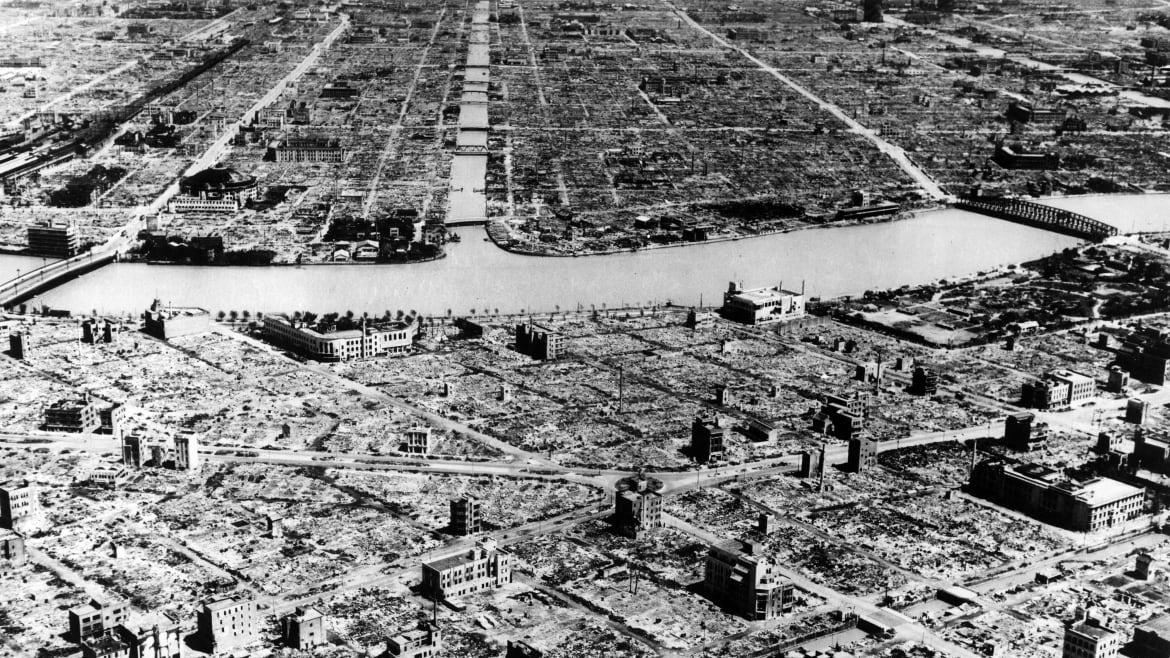
- Oops!Something went wrong.Please try again later.
James M. Scott’s Black Snow: Curtis LeMay, the Firebombing of Tokyo, and the Road to the Atomic Bomb comes just when the deliberate targeting of civilians in war has again become a major issue for Americans. Over the last six months, hardly a day has gone by without nightly television offering up horrifying pictures of Russian missiles and artillery striking Ukrainian citizens in their workplaces and their homes.
Black Snow tells us with great insight and detail what went into America’s thinking more than 75 years ago when it decided to target Japan’s citizens in World War II. The firebombing of Tokyo came at a time when America and the Allies were clearly winning the war and in no danger of having their homelands bombed. America had a variety of options for bringing the war against Japan to a close.
James Scott, a gifted writer of narrative nonfiction, is ideally suited to provide an account of the last months of America’s air war against Japan. In his 2015 book, Target Tokyo, Scott told the story of Jimmy Doolittle’s 1942 raid on Tokyo, which took place just months after Japan’s surprise attack on Pearl Harbor and long before America had built up its military strength in the Pacific.
U.S. Planned to Drop 12 Atomic Bombs on Japan
His new book continues this earlier story. The central figure in Black Snow is General Curtis LeMay, who carried out an air war designed to convince the Japanese they needed to surrender unconditionally or face obliteration. “If the Japs persist,” LeMay declared in 1945, “I now promise that they have nothing more to look forward to than the complete destruction of their cities.”
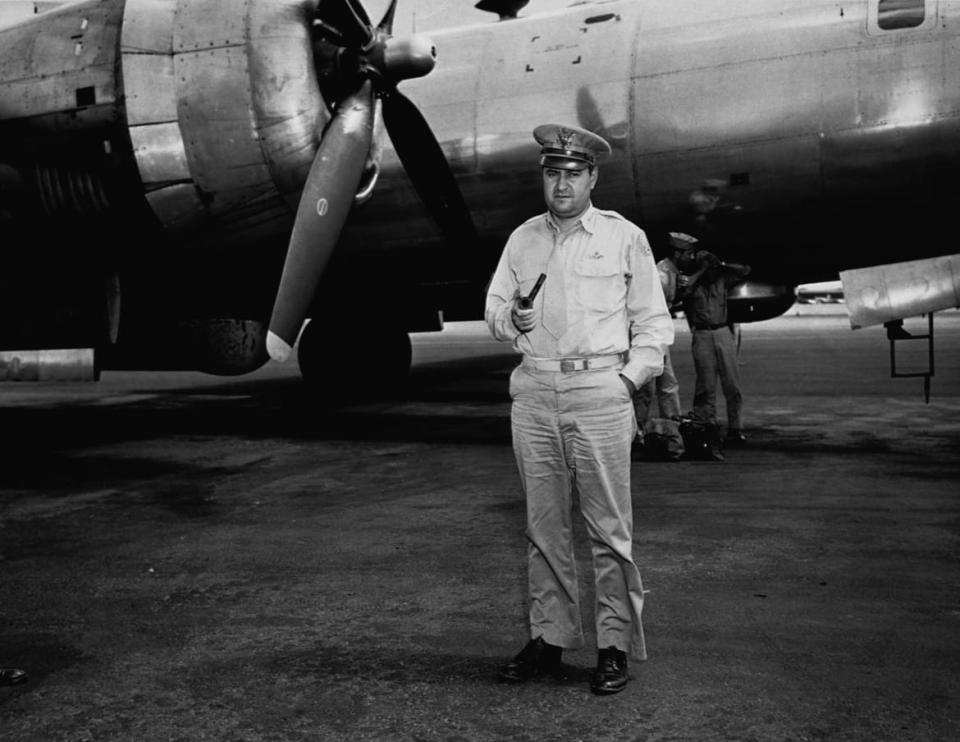
Major General Curtis Lemay, head of the bomber command against Japan, stands in front of a group of B-29 bombers at a base in the Mariana Islands during 1944.
Scott begins his history with LeMay’s predecessor in the air war against Japan, Brigadier General Haywood Hansell, Jr., an advocate of daylight precision bombing as a strategy for destroying Japan’s industry. The problem for Hansell was that daylight precision bombing did not work. In November 1944, Hansell’s 21st Bomber Command was given nine priority targets and failed to obliterate a single one. Its principal target, an aircraft plant in the Tokyo suburbs, suffered just 4 percent damage.
For Hap Arnold, the Army Air Force commander, who had pushed the government to invest billions in the massive B-29 bomber, which would lead the attack on Japan, Hansell’s meager results were unacceptable. Arnold was not prepared to give Hansell more leeway, especially when in its first year of production it took 30,000 hours to turn out a single B-29. Arnold quickly replaced Hansell with General LeMay, who on January 9, 1945 arrived on Guam to begin a new era in the Pacific air war.
What was expected of LeMay, just 38 years old at the time, was made clear by Brigadier General Lauris Norstad, Arnold’s chief of staff. “What General Arnold wants is the greatest possible number of bombs dropped on our priority targets in any given period of time,” Norstad told LeMay. “If you don’t get results, you’ll be fired.” Failure, Norstad went on to say, would mean an amphibious invasion of Japan with an estimated loss of 500,000 or more troops.
Norstad did not have to worry about LeMay having an ethical problem with targeting civilians. “You’ve got to kill people,” he believed, “and when you kill enough of them, they stop fighting.” LeMay knew how his firebombing of Japan would look if America lost the war. “If we lose,” LeMay confided to an aide, “we’ll be tried as war criminals.”
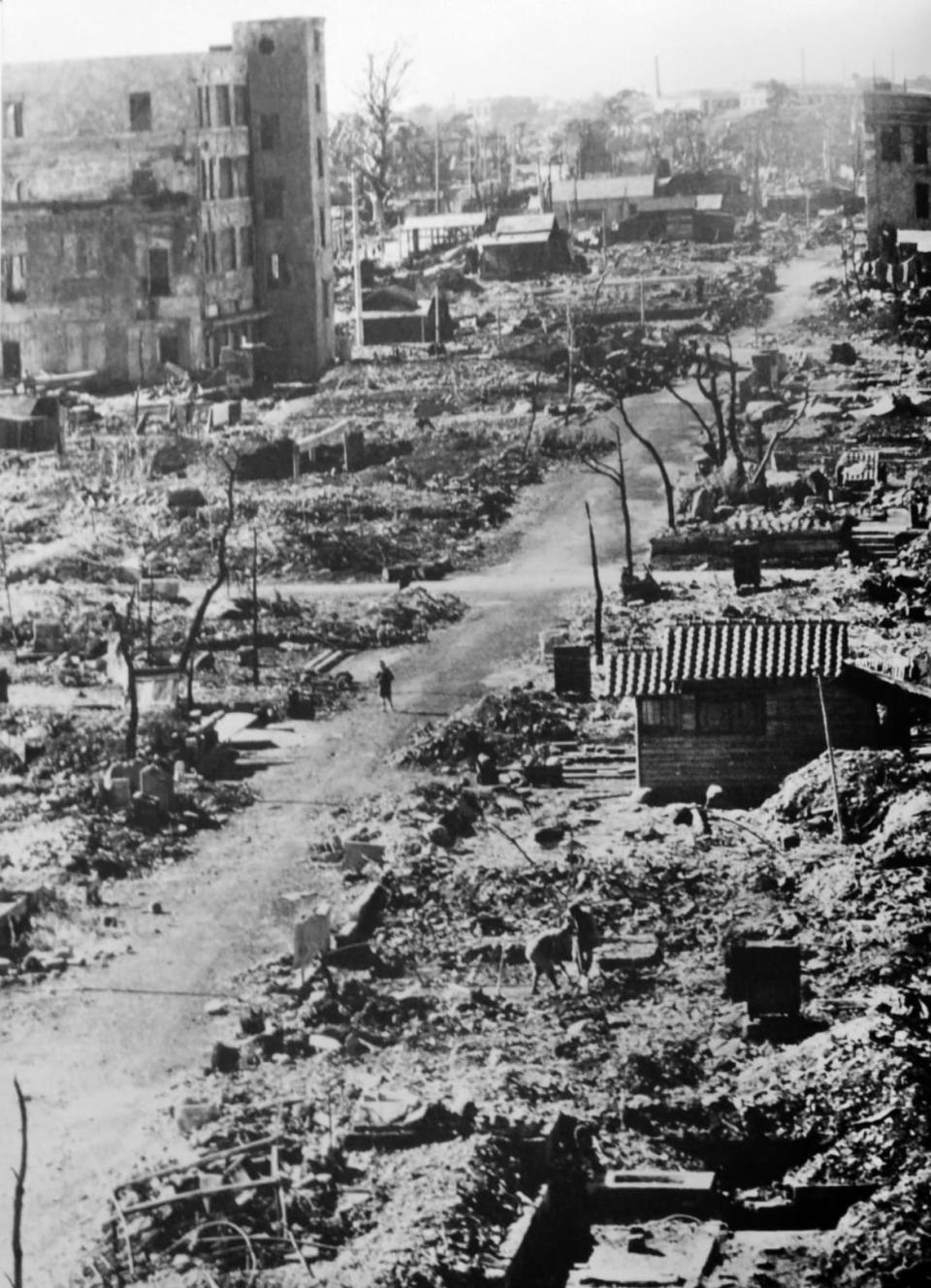
The ruins of Tokyo after the Allied bombing during the nights of the 9th and 10th March 1945. During the raids 279 aircraft launched 1665 tonnes of incendiary projectiles at the city.
LeMay’s chance to put his tactics together on a grand scale came on the night of March 9-10, 1945, in an attack on Tokyo. The results were a vindication for LeMay. The raid incinerated 15.8 square miles of Tokyo. One out of every four buildings in Tokyo vanished, and the human toll was higher. The attack killed 105,000 people, wounded another 40,918, and left 1 million homeless at a cost of only a 4.3 percent loss of planes.
For the Japanese on the ground, LeMay’s success was, as Scott notes, a nightmare—a world in which black snow became a new phenomenon. The fires that incendiary bombs set off consumed everything in their path from factory workers to teachers and housewives. The dead not only littered the ground but clogged rivers and canals. Corpses crowded the few standing bridges.
LeMay was not troubled by the thought of what he had done to ordinary Japanese citizens. “I believe that all those under my command on these island bases have by their participation in this single operation shortened the war,” he declared. But the Japanese did not give in after the March bombings. Their surrender would not come until September 2 after atomic bombs leveled Hiroshima and Nagasaki and Russia entered the war.
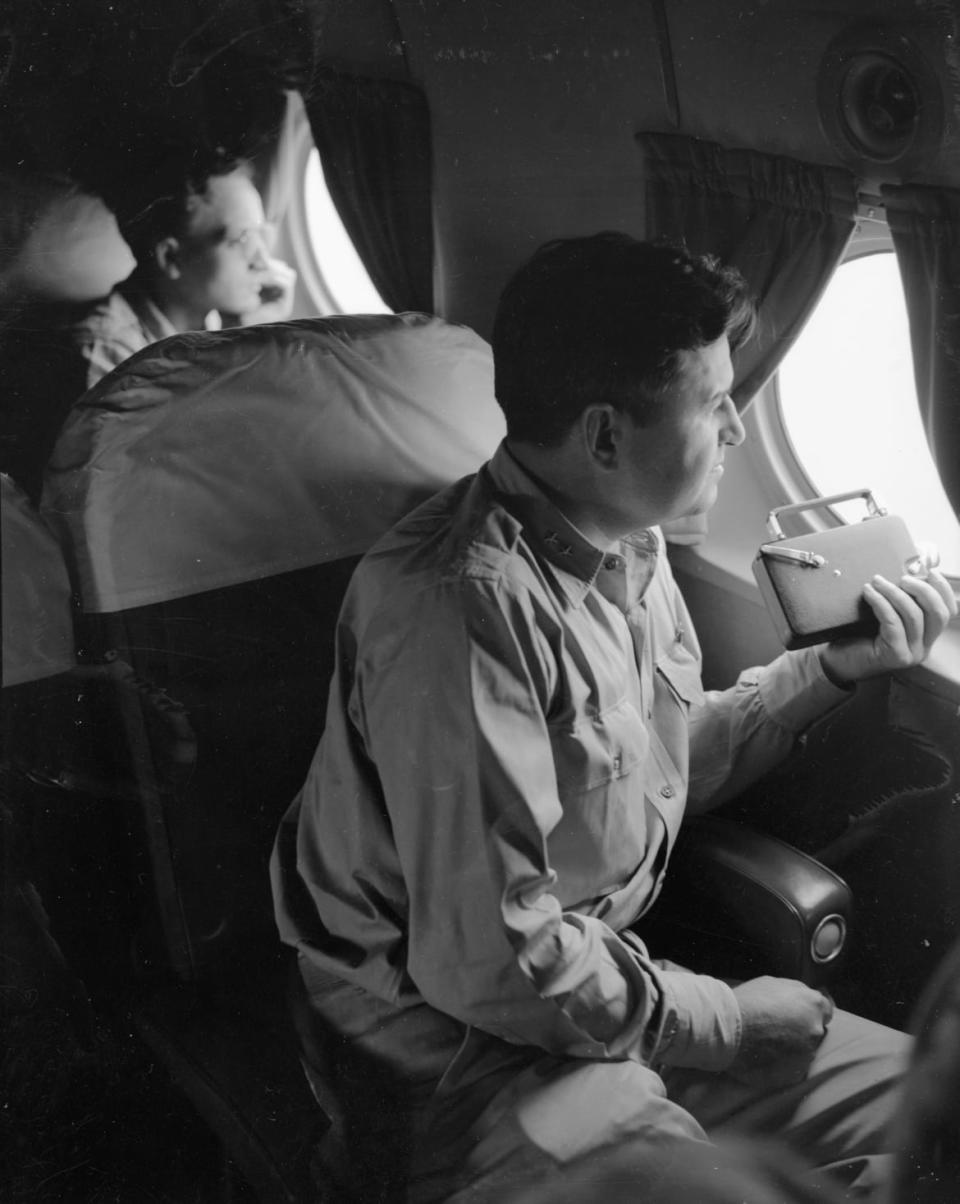
Major General Curtis LeMay, Chief of Staff, USASTAF, views bomb ruined Japanese cities in C-54 while on low-level inspection flight over Tokyo and Nagoya areas on September 7, 1945.
As Scott points out in a book that raises moral questions at every turn, what LeMay had done was make the road to atomic warfare easier to travel. If the kind of destruction he visited on one city was acceptable when done by hundreds of planes, what was the difference, except in intensity, if the same degree of damage was done by a single plane carrying a single atomic bomb?
Years later, one of LeMay’s airmen would write of his ongoing guilt over “the horrendous pain and suffering” he had helped inflict, but LeMay suffered no such pangs of conscience. “We knew we were going to kill a lot of women and kids when we burned that town,” he wrote in 1965. “Had to be done.”
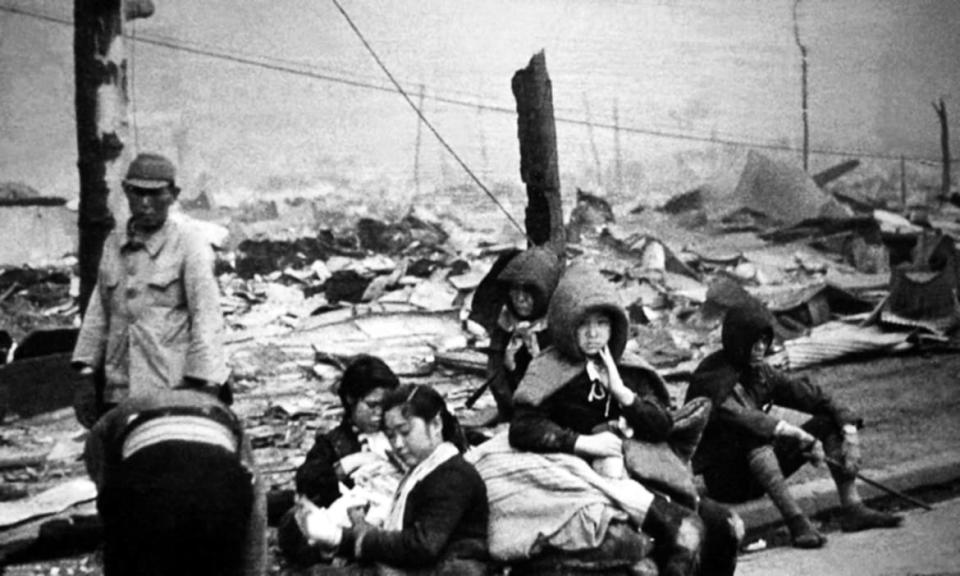
Tokyo residents who lost their homes as a result of the U.S. bombings. 10th March 1945. The Operation Meetinghouse air raid of 9-10 March 1945 was later estimated to be the single most destructive bombing raid in history. It was part of a series of firebombing raids, conducted by the United States Army Air Forces during the Pacific campaigns of World War II. Photo: Kouyou Ishikawa, officer of the Metropolitan Police Department. Tokyo, Japan.
LeMay was not alone in thinking the damage America inflicted on ordinary Japanese in the closing months of the war was the only practical option for sparing more American lives. “I regarded the dropping of the bomb as of great importance and felt that it would end the war possibly better than anything else—which it did,” Army Chief of Staff George Marshall would observe a decade after the war. “I think it was very wise to use it.”
On this issue, what separated LeMay from Marshall was civility. LeMay’s bluntness made him his own worst enemy, and after World War II, he brought more criticism on himself with his crude advice on how to end the war in Vietnam. “My solution to the problem would be tell them frankly that they’ve got to draw in their horns and stop their aggression, or we’re going to bomb them back into the stone age,” LeMay wrote in his autobiography, Mission with LeMay. Two decades after World War II, LeMay’s remarks generated widespread controversy, but his advice, Scott points out, was not far off comments that generated no controversy when in July 1945 he spoke of returning Japan to the “Dark Ages.”
Today, the issues Scott has so skillfully raised in Black Snow are most visible in the war of aggression Russia is waging against Ukraine. What has changed is our unqualified revulsion at the spectacle of ordinary citizens being targeted by a great power determined to minimize its battlefield loses.
Nicolaus Mills is professor of literature at Sarah Lawrence College and author of Winning the Peace: The Marshall Plan and America’s Coming of Age as a Superpower.
Get the Daily Beast's biggest scoops and scandals delivered right to your inbox. Sign up now.
Stay informed and gain unlimited access to the Daily Beast's unmatched reporting. Subscribe now.

